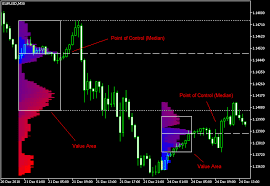Many investors prefer to focus on dividend growth stocks. Investing in dividend-growing firms includes purchasing stock in those businesses. Dividend growth stocks are an option for those wishing to diversify their portfolio, protect themselves from market volatility and inflation, and even earn passive income. These stocks typically come from companies that have been deemed secure, low-risk, and potentially promising. However, just like any other type of investment, there are dangers and factors to consider when purchasing dividend growth stocks. So read on to discover some high dividend growth stocks, ETF, and the best dividend growth stocks.
Dividend Growth Stocks
Dividend stocks are stocks that give buyers a regular share of the company’s earnings. Most American dividend stocks pay a fixed amount to investors each quarter, and the best ones raise their dividends over time, allowing investors to establish an annuity-like cash stream.
Many investors prefer to focus on dividend growth stocks. Investing in dividend-growing firms includes purchasing stock in those businesses. The dividends can be reinvested in the company or in other stocks that have a history of paying out dividends similar to that of the dividend payer. The idea is to have a growing investment portfolio over time. Despite dividend growth stocks’ reputation for stability, no asset class can ever be guaranteed (including dividend payments).
Growth dividend stocks are more difficult to discover, but they are still available on Wall Street. One group consists of well-established businesses that are sizable enough to support a dividend while also being well-managed and planning for future success. Another type entails tactical moves that are specifically beneficial to their firm and are based on transient trends. Of course, there are other established dividend payers that may be on the verge of a recovery that will fuel growth, even if it merely returns them to their previous levels.
High Dividend Growth Stocks
The nine high dividend growth stocks in the list below offer a wide range of investments that suit these concepts. But one thing they all have in common is that they all expect their sales to grow by 10% and pay out a profit of at least 2%.
#1. Union Pacific Corporation (NYSE: UNP)
- Average Annual Dividend Growth Rate: 16.5%
- Years of Consistent Dividend Growth: 15
Union Pacific Corporation (NYSE: UNP), headquartered in Nebraska, operates in 23 states in the western two-thirds of the United States. On December 9th, the company maintained its prior dividend rate of $1.30 per share by declaring a quarterly dividend of the same amount. In the past five years, the company has increased its dividend by an average of 16.5% per year. In addition, the company has maintained 15 consecutive years of high dividend growth. On February 1, the stock’s payout yield was 2.55 %.
#2. Home Depot (NYSE: HD)
- Dividend Growth Rate Over 5 Years: 16.4%
- Years of Consistent Dividend Growth: 12
Home Depot, Inc. (NYSE: HD), which is based in Georgia, is an American home improvement company. The company sells construction-related goods and supplies for home improvement. As of February 1, the company’s quarterly dividend is $1.90 per share, and the dividend yield is 2.34%. With a 5-year average high dividend growth rate of 16.4%, it has been increasing its dividend for the previous 12 years. One of the top dividend growth stocks is the corporation because of its steadily increasing payouts.
Cowen upped its price target for The Home Depot, Inc. (NYSE: HD) shares to $379 in December and gave the stock an Outperform rating. The company’s retail performance was “best-in-class,” according to the company.
At the end of September, 89 of the hedge funds in Insider Monkey’s database owned shares of The Home Depot, Inc. (NYSE: HD). This is up from 80 in the previous quarter. The total market value of these stakes exceeds $5.6 billion. Fisher Asset Management was the company’s largest shareholder in Q3, with more than 8 million shares.
#3. T. Rowe Price Group, Inc. (NASDAQ: TROW)
- 5-year average annual growth rate: 16.05%.
- Years of Consistent Dividend Growth: 36
T. Rowe Price Group, Inc. (NASDAQ: TROW), based in Maryland, is an investment management company that gives institutional and individual clients a wide range of investment plans and services. By the end of 2022, the company would have more than $1.27 trillion in assets. It made $6.5 billion in sales over the course of the year.
Deutsche Bank kept T. Rowe Price Group, Inc.’s (NASDAQ: TROW) Hold rating and $113 price target in January after the company’s Q4 reports.
T. Rowe Price Group, Inc. (NASDAQ: TROW) has a 5-year annual dividend growth rate of 16.05 percent. For the past 36 years, the company has been giving its owners high dividends, which makes it one of the best dividend growth stocks. As of February 1, it has a dividend yield of 4.12% and pays a quarterly dividend of $1.20 per share.
#4. Packaging Corporation of America (NYSE: PKG)
- 5-year average annual dividend growth rate of 14.7%.
- Years of Consistent Dividend Growth: 11
Packaging Corporation of America, which trades on the New York Stock Exchange (NYSE: PKG), is an American company that makes corrugated packaging goods. The company’s dividends have grown every year for the last 11 years, and the average annual growth rate over the last 5 years has been 14.7%. As of February 1, it pays a dividend of $1.25 per share every three months and has a dividend yield of 3.50%. The company is one of the stocks on our list with high dividend stock growth.
In January, Truist upped Packaging Corporation of America’s (NYSE: PKG) price target to $144 and kept its Buy rating on the stock. The company was praised for its good sales and recent quarterly earnings.
Dividend Growth Stocks ETF
There are very low rates on investments right now. These exchange-traded funds (ETFs) make investments in the best dividend growth stocks and can help investors get the money they need. The following are the dividend growth etf stocks.
#1. VIG (Vanguard Dividend Appreciation ETF)
VIG is one of the most popular dividend stocks growth ETF. The overall value of the fund’s assets is more than $25 billion. Vanguard is well known for offering low-cost investments, and its annual expense ratio of 0.09% is lower than 91% of typical funds with comparable holdings. (VIG) is spread out across different industries, and the portfolio has 185 different stocks.
The Dividend Achievers is a group of firms that have increased their dividends for at least ten straight years, and VIG aims to follow their performance. The average return on VIG over the past five years has been 10%, and the average return since the company was founded is 7%.
The fund makes significant investments in the industrial sector and consumer goods sectors, which account for 46% of its total net assets.
#2. iShares Select Dividend ETF (DVY) Yields 3.1%
DVY tries to buy stocks that pay high dividends in a wide range of industries and market capitalizations. The fund owns a total of 100 dividend-paying stocks that have been around for at least five years.
Lockheed Martin (LMT), CME Group (% yield CME), and Chevron Corp. (CVX) are the three stocks that DVY owns the most of. This fund buys stocks that have an average P/E value of 19. There are 95 investments in the portfolio right now.
DVY has been doing very well for a long time. The fund’s overall return over the past year was 17%, and it has averaged 8% per year since it began.
With 31% of the ETF’s market value, utilities have the most weight among its different sectors. Next, with 13% and 12%, come banking and industrial stocks. At 1.5% of assets, the information technology area has the least weight. DVY’s beta value is 0.65 due to its significant allocation to defensive sectors. The expense ratio for the year is just 0.39%.
#3. iShares Core Dividend Growth (DGRO)
DGRO intends to invest in US stocks, with a bias toward companies that regularly grow dividends. The distribution return of the fund is 2.5%. DGRO’s dividend yield is roughly 60 basis points lower than DVY’s, but it more strongly emphasizes dividend growth, which more than makes up for this. The fund uses a technique called “screening” to focus on stocks with high dividend growth every year. General Electric (GE), Johnson & Johnson (JNJ), and Exxon Mobil (XOM) are the top three stocks. This fund has put 16% of its money into consumer goods and 15% into industries. It has stayed away from industries with a lot of high-yield, low-dividend-growth stocks, such as utilities and telecoms, which only make up 5% and 0% of total assets, respectively.
With 425 stakes in many different industries, DGRO is very diversified. And the fund’s annual cost is only 0.12%, which is very cheap. Over the past year, DGRO has made a total return of 8%, and it has made an average return of 6% per year since it started.
Read Also: YEAR OVER YEAR GROWTH: Examples, Formula and Calculations
Best Dividend Growth Stocks
In the past, dividend growth stocks have delivered impressive performance in bull markets and served as safety in down markets and unstable conditions. The following are the best dividend growth stocks.
#1. Lowe’s (LOW 0.61%):
The industry leader in home improvement does not appear like a very interesting investment. That is true unless you enjoy dividend growth. Since going public in 1961, the company has boosted its dividend every year, increasing the distribution by a whopping 556% in the last decade alone. Investors shouldn’t worry about the housing decline that started in the second half of 2022. When there aren’t many homes for sale and it’s hard to get one, people are more likely to make improvements to the one they already own. Another key figure for Lowe’s: Depending on the state, the typical U.S. home ranges from 31 to 60 years old. The next generation of DIYers, as well as home renovation contractors, will spend a lot of money at Lowe’s. It has put pros at the top of the list, and sales are rising there.
#2. Walgreens Boots Alliance (WBA, -0.28%):
One of the world’s leading retail pharmacy operators, Walgreens’ turnaround strategies are bearing fruit. The corporation has saved billions of dollars through its transformation into a more vertically integrated healthcare provider. When you add it all up, this business is going to make even more money. The company’s long-term goal for its U.S. healthcare business was recently raised. Walgreens stock has a dividend yield of more than 5% and has grown its payouts every year for 47 years in a row. This is a good sign for dividend and value investors.
#3. Chevron (CVX, -0.43%):
Oil prices are rising. Oil stocks have reemerged in recent years; the energy industry has outperformed many others since the coronavirus outbreak, and Chevron has been a huge winner for investors.
To be fair, Chevron has really produced good cash flows and steady payout growth for more than 35 years, making it a relatively solid company to buy, especially for dividend investors. With the ups and downs in oil prices, the stock price can change significantly, but dividend investors have found Chevron to be a successful long-term investment.
How Do You Make $1000 a Month in Dividend Stocks?
It’s preferable to think in terms of yearly dividends if you want to earn $1,000 every month. Businesses report their average yield annually rather than on the basis of monthly averages.
How to Make $500 a Month in Dividends?
If the business is able to keep paying a monthly dividend, investors will need to put only around $68,726 into their investments to receive $500 each month. In non-registered accounts, Sienna pays out qualified dividends that are taxed favorably. Since at least 2010, Sienna has maintained or grown its dividend.
Are Dividend Growth Stocks the Best?
Dividend stocks tend to do better than growth stocks and provide consistent cash flow at regular intervals. An investment in dividend stocks can also be less risky because it usually means that the company is financially stable enough to pay shareholders in cash.
Are Dividends Better Than Stocks?
Dividend stocks have the ability to bring in more money than growth stocks. Based on data from the S&P 500 index, dividend stocks tend to do better than the stock market as a whole and growth stocks.
What Are the Benefits of Dividend Growth Stocks?
Investing in businesses that have a steady dividend growth rate can boost total returns, reduce volatility, and offer a dependable source of income. Companies that focus on growing their dividends have, in the past, done well in rising markets and helped to reduce risk during times of high instability and falling markets.






